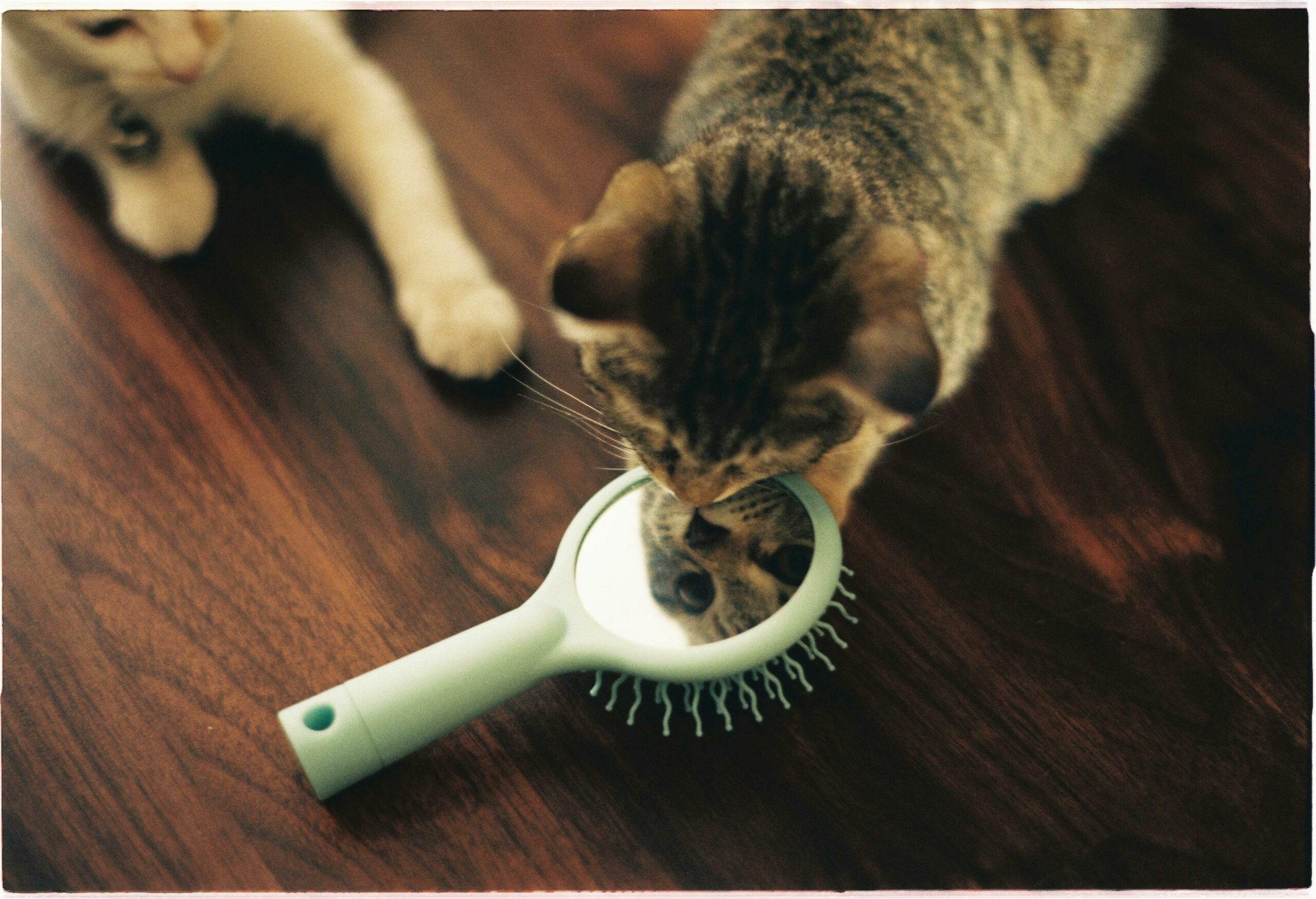
Do animals have self-awareness? Self-awareness is a cognitive ability that allows an individual to recognize itself as separate from others and the environment. One widely used method to assess this ability is the mirror test, first developed by psychologist Gordon Gallup Jr. in 1970. This test has been instrumental in determining whether animals can recognize their own reflection.
But can pets such as dogs and cats pass this test? Let’s explore the science behind self-awareness in animals and what it tells us about our furry companions.
The Mirror Test and How It Works
The mirror test is a behavioral experiment designed to measure an animal’s self-recognition ability. Here’s how it typically works:
A mark is placed on an animal’s body in a location it cannot see without a mirror.
The animal is given access to a mirror.
If the animal touches or investigates the mark on its own body after looking in the mirror, it is considered to have passed the test.
Which Animals Pass the Mirror Test?
Species that have successfully passed the mirror test include:
Great apes (chimpanzees, orangutans, bonobos)
Bottlenose dolphins
Elephants
Magpies
However, most domesticated pets, such as dogs and cats, do not pass the mirror test. Does this mean they lack self-awareness? Not necessarily.
Do Dogs Recognize Themselves in Mirrors?
Dogs typically fail the mirror test because they rely more on smell than vision to perceive the world. Instead of recognizing their reflection visually, they use scent-based self-recognition.
A study by Dr. Alexandra Horowitz, a leading canine cognition researcher, introduced the sniff test of self-recognition (STSR). The experiment found that dogs are more interested in sniffing modified versions of their own scent than unfamiliar scents. This suggests that dogs may have a form of self-awareness, but it is based on smell rather than sight.
How Dogs React to Mirrors
When dogs see a mirror for the first time, they often:
Show initial curiosity, trying to interact with their reflection.
Lose interest quickly once they realize the reflection does not have a scent.
Display no long-term signs of recognizing the reflection as “self.”
This behavior indicates that mirrors do not provide useful information for dogs, but they may still have self-awareness through other senses.
Can Cats Recognize Themselves?
Like dogs, cats also fail the mirror test. Most cats:
Initially show curiosity by pawing at or reacting to their reflection.
Eventually lose interest and ignore mirrors altogether.
Do not display behaviors indicating self-recognition, such as inspecting a mark on their body.
However, cats do show signs of individual self-awareness through scent marking and territory recognition. They use pheromones to distinguish between familiar and unfamiliar objects, much like dogs use scent-based recognition.
Alternative Forms of Self-Awareness in Pets
Even though most pets fail the mirror test, this does not mean they lack self-awareness. Many researchers argue that self-recognition might manifest in different ways depending on the species.
1. Scent-Based Recognition
Both dogs and cats rely on their sense of smell more than vision. Dogs use urine marking and sniff tests to differentiate between self and others. Cats also use scent marking by rubbing their faces on objects to claim territory.
2. Social Recognition
Dogs and cats can distinguish their owners and other familiar individuals. Studies show that dogs can recognize their owners’ faces and voices, displaying strong emotional bonds.
3. Body Awareness
Some studies suggest dogs have body awareness. In an experiment, dogs were placed on a mat with an attached object. They had to pick up the object and hand it to their owner. When the object was attached to the mat, dogs moved off the mat before lifting the object, suggesting they understood their body was an obstacle.
Pet Intelligence & Self-Awareness in Animals
Self-awareness is only one aspect of intelligence. Even though dogs and cats fail the mirror test, they demonstrate other cognitive skills, including:
Problem-solving abilities
Emotional intelligence
Memory recall
Complex social behaviors
These abilities indicate that pets experience a form of self-awareness that goes beyond mirror recognition.

Conclusion
So, do animals have self-awareness? While self-awareness in animals is often measured using the mirror test, many species—including dogs and cats—fail this test due to their reliance on non-visual senses. Instead, they demonstrate self-awareness through:
Scent-based recognition (dogs and cats)
Social recognition (identifying owners and familiar animals)
Body awareness (understanding their own movement in space)
These findings suggest that the concept of self-awareness is more complex than the mirror test alone can measure. Our pets may not recognize themselves in mirrors, but they certainly possess unique forms of intelligence and self-awareness that make them extraordinary companions.
References
Mirror Test – https://pmc.ncbi.nlm.nih.gov/articles/PMC10587091/
Dogs Recognize Themselves in Test Based on Smell, Not Sight – https://www.nytimes.com/2017/09/22/science/dogs-smell-recognition.html
Why Do Cats Scent Mark? Understanding the Behaviour – https://www.lifewithcats.tv/cat-scent-marking/
Body size awareness matters when dogs decide whether to detour an obstacle or opt for a shortcut – https://pmc.ncbi.nlm.nih.gov/articles/PMC10587091/
Share this:
- Click to share on WhatsApp (Opens in new window) WhatsApp
- Click to share on Facebook (Opens in new window) Facebook
- Click to share on LinkedIn (Opens in new window) LinkedIn
- Click to share on Pinterest (Opens in new window) Pinterest
- Click to share on Tumblr (Opens in new window) Tumblr
- Click to share on X (Opens in new window) X
- Click to share on Reddit (Opens in new window) Reddit
- Click to share on Telegram (Opens in new window) Telegram
- Click to email a link to a friend (Opens in new window) Email
- Click to print (Opens in new window) Print































